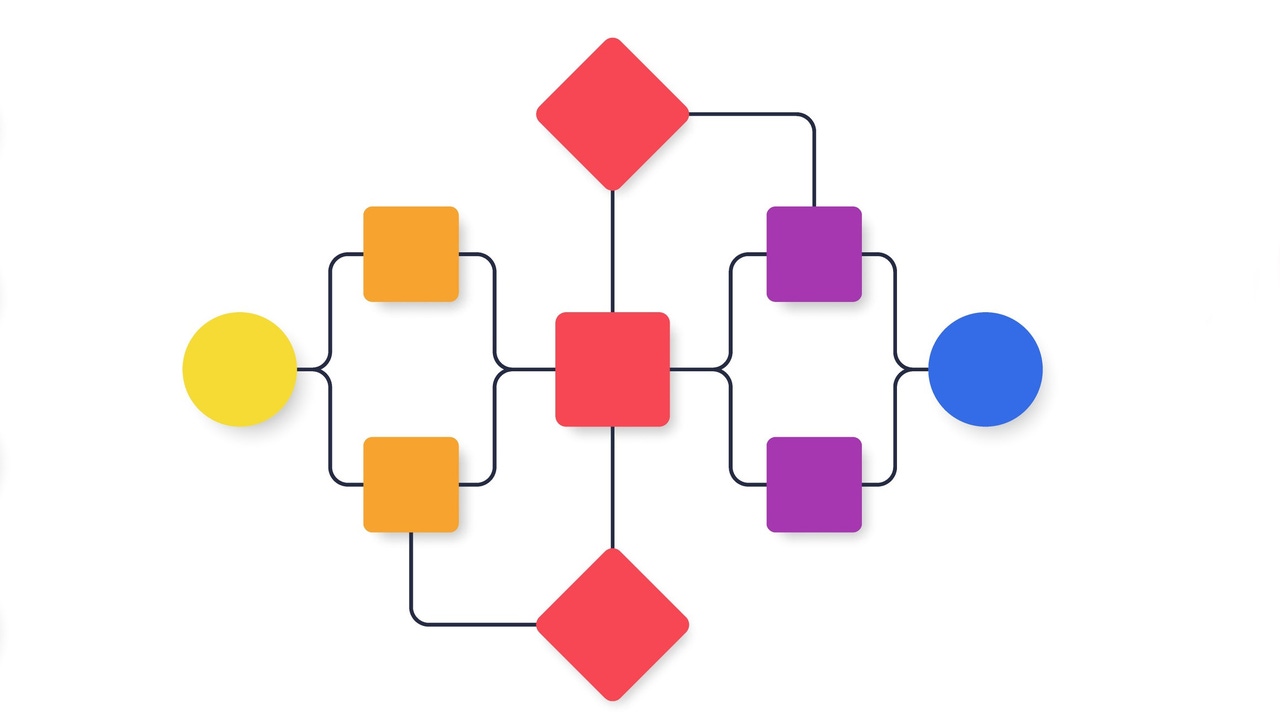
Read More from GDC 2024 | Keep up with the latest game industry event coverage from GDC 2024, including news, talks, interviews, and more from the Game Developer team.
How to build branching narrative without breaking the bank
Freelance game writer and narrative designer Nessa Cannon wants devs to know they can craft meaningful narrative choices without overscoping.

At a Glance
- Branching narrative and dialogue trees are a beloved feature of game design, but can be difficult to do without overscoping.
- Writer Nessa Cannon has worked on multiple low-budget games and learned how branching narrative can be done efficiently.
- In her GDC 2024 presentation, Cannon broke down how developers can create branching stories without burning time and money.
Freelance game writer Nessa Cannon had come to the 2024 Game Developers Conference to tell developers how they can efficiently design branching narrative and dialogue without breaking their budgets or their brains.
Or...that's what she said she was going to do. But early in her talk, she revealed the whole thing was a ruse. "This was all a scheme to tell you all to play Pentiment, now on Nintendo Switch!" she declared.
It wasn't much of ruse, all things considered. In fact if you are going to talk about efficient ways to tell stories through branching narrative, yeah, you should probably reference Obsidian Entertainment's excellent medieval murder mystery role-playing game.
Cannon referenced a particular moment in the game where player character Andreas is wandering through a labyrinth in his dreams. He encounters a vision of his wife—a character the player never meets in the waking world—and the game asks the player to pick one of two dialogue choices when he speaks to her.
Should Andreas say "Can you ever picture someone clearly if you love them?" or "Can you ever picture someone clearly if you hate them?"
"I think about this line every day," Cannon said, calling it an "absolutely devastating" piece of dialogue. She confirmed with the Obsidian team that the choice does not lead to different outcomes in the story. Both answers branch back to the same response from Andreas' wife: a simple "...", indicating silence.
Cannon used this example as a foundation for her thinking about how developers can construct efficient branching narrative and dialogue in games.
It's not that "have two equally compelling choices that produce the same result" is some kind of silver bullet, but that carving the choice in this way reinforced the game's themes of memory, history, and how people choose to relate to each other.
It was at this point in Cannon's talk that a bulb in one of the room's projectors blew up with a loud "pop." Ominous.
But after the audience recovered from the surprise, she dove into a framework that can help developers of all shapes and sizes build branching narrative that will let players feel empowered in their games.
Branching narrative lives on a spectrum
The foundation of Cannon's framework is that you can look at branching narrative design on a spectrum. That spectrum ranges from games with nearly zero branching narrative (like Respawn Entertainment's Star Wars Jedi: Survivor) to games with continuously branching narrative that can result in wildly different endings (like Supermassive Games' The Quarry).
When you cast aside the former group, that spectrum expands into a different range of possibilities. Cannon benchmarked three points along the spectrum that she labeled as "pillars" to help you conceptualize where your game might fall on them.
The first pillar is one she labeled as "consequential branching." This would be the type of game like those Supermassive Games specializes in. Cannon called out Until Dawn's "Butterfly Effect" mechanic as being a fantastic way to organize branching content and communicate its effect to the player.
The pros of making this kind of game, Cannon explained, are that they're fun to write, they let writers and players explore the furthest ends of the game world, and the branching choices feel tangible to players.
The cons hit pretty hard though. "This approach costs so much time, money, crunch, and wasted content that players will never see," she said.
"We're all really tired and we need to be really intentional about where we're spending our energy."
Next, Cannon introduced the "pillar" of "branching in the interest of theme." The above example from Pentiment is a good example of this tactic. Though that particular dialogue choice doesn't produce different results, the rest of the game's branching philosophy balances a mix of dramatic and thematic choices that shape where the story goes. Choosing whether or not to speak to certain individuals—and how you treat them—serves the game's central themes and creates variance on a decades-long murder mystery.
Cannon said this mentality informed her work on the upcoming space trucking simulator Star Trucker, and that she used this idea to explore the idea of community aid and what it means to "do the right thing." This method of branching allows developers to shore up their authored narrative and tailor choices to theirs and the players' emotional needs.
If Cannon weren't taking such a holistic approach to branching narrative it would be easy to interpret her analysis as one that says this method is "better" than any other. But that's not the case. She devoted time to the downsides of this method, warning off developers who might not be able to embrace it.
"It takes a fine kind of touch," she warned, saying if branching in this way is done too explicitly it can come off as preachy and won't flow as well. She noted that if a games themes aren't "subtle," it can feel unnatural.
The final pillar she sketched out was the pillar of "branching for character definition." This is a method that can be shortened as "giving three different ways to say 'yes' or 'no.'"
She referenced the most recent Fallout games, which let players respond to basic queries with answers that can be earnest, snarky, or antagonizing, but all lead to the same reply. She said this method lets developers "inject little bits of roleplaying" into their games, even if they aren't making out-and-out roleplaying games.
One example of the branching Cannon described can be seen in Guerrilla Games' Horizon series. The plots of the games are largely linear but players have the choice to decide how Aloy converses with other characters in the game. Here those choices are defined by three symbols: a heart, a brain, or a fist. These choices sometimes shift plot outcomes (and even how events play out later in the game), but sometimes they're there to let players react organically to the scene before them.
"Letting the player decid how they want to say 'yes' or 'no' offers just as much agency as saying 'yes' or 'no,'" she said. "It's all a part of creating a fleshed-out world to interact with.
It should be said that some players can find these choices to be artificial in nature. Figuring out how to balance that artificiality with a sense of agency will be a challenging task.
Devs don't need to lock themselves in to any one method
Dividing these methods of branching narrative makes for a great GDC talk but could may not align with how developers are trying to make games. Fortunately Cannon's framework addresses this challenge. Place all three pillars at equidistant points from each other, and boom, instead of a linear spectrum of options, you have a helpful triangular one.
Image via Game Developers Conference.
Your game might belong on one of the triangle's ends, or drift somewhere in the middle as you try to blend different branching possibilities. Cannon noted that there's fresh territory to explore in the world of blending thematic branching and consequential branching in story-focused games.
To cap it off, Cannon urged developers to think big with how they can create branching narrative systems in games, saying they don't need to be scared of scope.
"You can accomplish more than you think...if you know your themes, your characters, and your audience," she said encouragingly.
Game Developer and Game Developers Conference are sibling organizations under Informa Tech.
About the Author(s)
You May Also Like







.jpeg?width=700&auto=webp&quality=80&disable=upscale)








